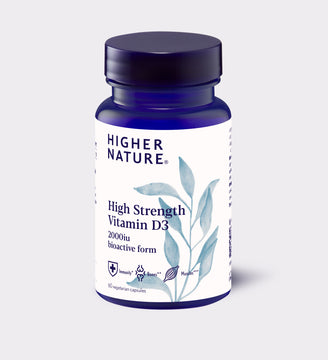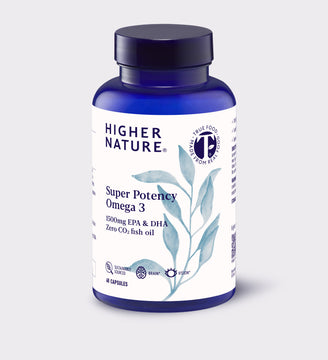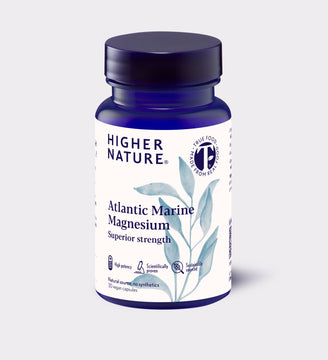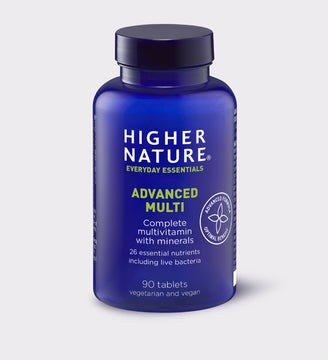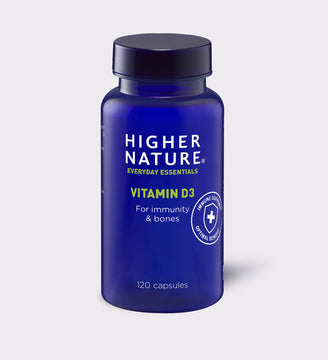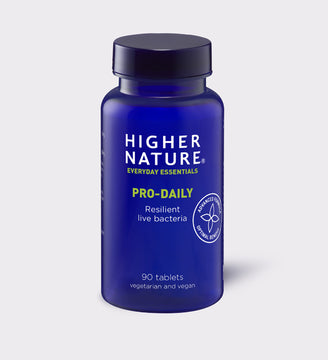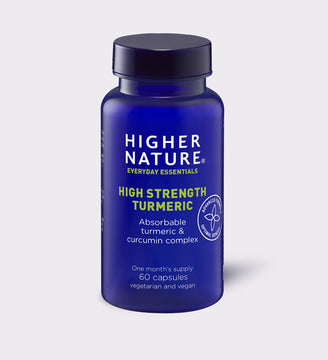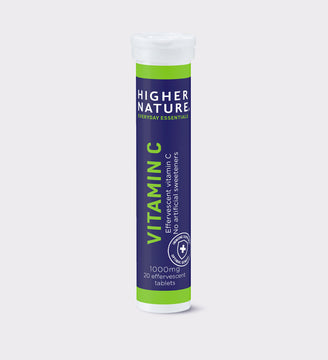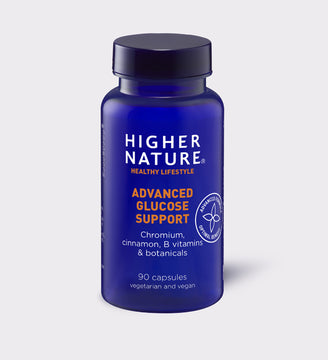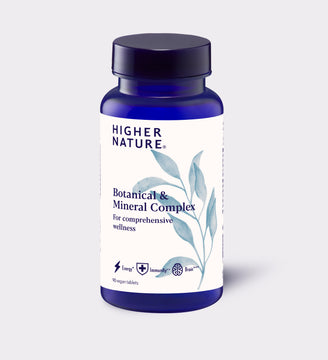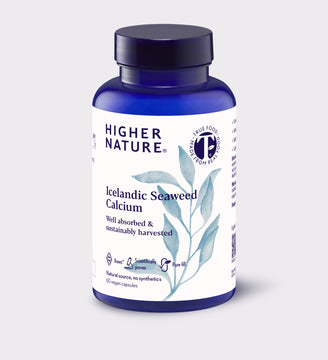
Eye strain under lockdown?
Higher Nature Nutrition Team
Protect your eyes with nutrition!
In these days of lockdown, technology has been a godsend for many of us.
Whether home-schooling the kids, working from home, following You Tube exercises or using Zoom, Skype, smart phones or any other digital means to keep in contact with family and friends, many of us have been relying on technology as never before.
But all this increased use of digital devices can take its toll on your eyes, leading to problems such as eye fatigue, strain, dry or irritated eyes or even blurred vision. The effects of exposure to blue light emitted from the devices can cause eye dryness and strain whatever your age, meaning that eye health is no longer a priority just for the elderly. Moreover, the blue light emitting from our screens can delay melatonin release. Melatonin is the hormone that governs our sleep-wake cycle and this disruption can have a negative impact on our body’s circadian rhythm (internal body clock) – playing havoc with sleep patterns.
Are your eyes being damaged?
Free radicals generated by blue light from our digital devices, as well as from UV rays from the sun, are molecules which in excess, can damage the sensitive cells in the macula. The macula is a tiny yellowish area at the centre of the retina responsible for central vision. Over time, this free radical damage takes its toll on the macula, resulting in blurred or no vision in the centre of the visual field - a condition commonly known as macular degeneration.
The irreversible degeneration of the macula is age-related, usually occurring after the age of 50, but it is believed that greater exposure to blue light and LED lighting may result in increasing numbers of people being affected at an earlier age. So it is never too early to protect your eyes!
The macular pigment contains three antioxidant carotenoids, lutein, zeaxanthin and meso-zeaxanthin which protect the eyes by providing optimal filtration of short-wavelength blue light. Lutein and zeaxanthin are also naturally found in the lens of the eye, where they play an important role in decreasing the damage that contributes to cataract development. The problem is that as our screen time ramps up, so does the level of destructive free radicals - this increases the need to support our own antioxidant defense systems and protect the eyes from long-term damage.
So how do we get these important nutrients from our diet?
Eat your greens! Green leafy vegetables such as kale, parsley, spinach and broccoli along with yellow and orange fruits and vegetables such as peppers, apricots, sweetcorn, tangerines and oranges provide us with the naturally occuring plant pigments, lutein and zeaxanthin. Meso-zeaxanthin does not naturally occur in many foods but may be made from lutein in the body as needed. Studies have shown that 10mg lutein and 2mg zeaxanthin can help to maintain eye health and you can top up your dietary intake with a supplement if necessary.
Other antioxidants such as lycopene, beta carotene and anthocyanidins – plant pigments in fruits such bilberries - also assist in nourishing the eyes and combatting free radical damage. The best source of lycopene is tomatoes – the redder the better! Other great sources are tomato juice, watermelon, pink grapefruit, apricots and blood oranges.
Beta carotene is an antioxidant that provides the red, yellow and orange pigmentation to fruits and vegetables such as carrots, sweet potatoes, canteloupe melon and red and yellow peppers. It converts in the body to vitamin A which helps protect the surface of the eye (cornea) and which is needed for the production of rhodopsin which supports healthy vision in low light conditions. So mum was right – carrots can help you to see in the dark!
Additionally the omega 3 fatty acid, DHA found in oily fish, is a key structural component of the retina and is believed to help protect age-related degeneration of the eye.
Astaxanthin (pronounced “asta-zanthin”) is another carotenoid that has great affinity for the eyes, being able to cross the blood-retinal barrier. It is a pink pigment found naturally in the algae, Haematococcus pluvialis, which in turn is eaten by lobsters, crabs, shrimps and salmon, giving them their characeristic pink hue! Studies have demonstrated the protective effects of astaxanthin against light-induced and inflammatory damage in the eye as well as its potential for reducing eye fatigue and soreness. Good news if you spend too long in front of a computer screen!
and finally, Could you be low in Vitamin D?
Vitamin D has been in the news lately as it is not only essential for healthy teeth and bones, but is also thought to play a crucial role in immunity. In addition it is thought to be important for healthy vision as low levels may contribute to dry eyes. Other factors that may lead to dry eyes are frequent use of contact lenses, being over 50 and spending long periods looking at phones and computers.
But if you can’t avoid screen use, please read my top tips for good eye health:
1. If you have been noticing “floaters” in your field of vision, it may be because your computer screen is too bright or you are back-lit. In this case, reduce the level of brightness on your computer monitor and eliminate any sources of glare which might come from bright lighting or a window. Eye floaters appear when the vitreous gel in the eye degenerates and become increasingly common from the age of around 30 and over. Eye floaters are also more common in people who are short-sighted.
2. Your computer screen should be correctly positioned in relation to your eyes, with your eye level in line with the top of the screen and placed about 18-30 inches from where you are sitting.
3. Tilting the screen back slightly can prevent glare from ceiling lights and reduce stress on eye muscles.
4 You should not be straining to look at your computer or laptop. If you need glasses, make sure you have the proper prescription for the computer screen distance – intermediate distance – which is almost double that of a book held in your hands.
5. Dim the surrounding lights as the screen should be brighter in comparison and adjust font size and browser settings for comfort.
6. Blink. You may not have noticed that when looking at objects close up such as your computer screen, you tend to blink less often. This can lead to dryness and irritation.
7. Eye fatigue is common when working all day on a screen. Muscles hold the iris and the pupil in place and have to constantly dilate and constrict to control the amount of light entering the eye, so it is important to take regular breaks ……...remember the 20/20/20 rule! Every 20 minutes look at something 20 feet away for 20 seconds. Additionally – get up and walk around every hour for at least 5 minutes at a time.
8. Cleanliness of the computer screen is often forgotten! Clean the screen regularly to avoid the build up of dust and static.
